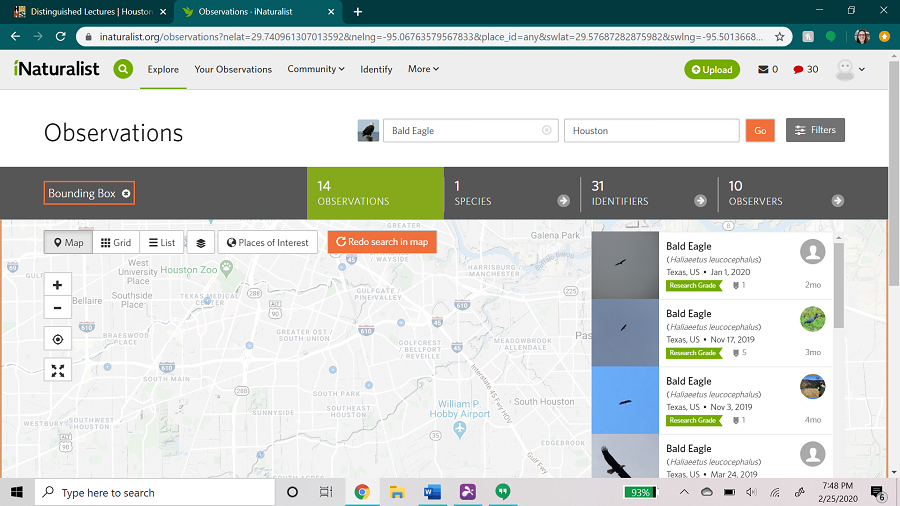Spring in Texas is an amazing time. The heat isn’t turned up to 11, the precipitation is questionably predictable and, for those few fortunate amongst us, the pollen coats everything you own.

It is also a time when the wildflowers bloom, the critters start reemerging and the mosquitoes haven’t found us…yet. Because it IS getting warmer during the day, we have a tendency to spend a bit more time in the outdoors finding bluebonnets and hiking every trail from Buffalo Bayou to the Pecos. As you are out enjoying that two-week period we Texans call spring, I encourage you to become a “citizen scientist.” Let others take advantage of your passion for the outdoors and further science while you do it. How so? Download the iNaturalist app and start snapping pictures. There’s a bit more of a tutorial at iNaturalist.org, but that’s pretty much the gist.
The photos you take are time and date stamped as well as geolocated. They are then cataloged on the iNaturalist website so any picture you take allows scientists to track that particular species across the globe. Nature enthusiasts all over the world are helping to track invasive species, migration patterns, species declinations and telling all of us a surprising thing or two about our local biodiversity. Did you know, for example, that Bald Eagles live around the Museum District!?

If you are competitive, you might want to take this to a whole-nother-level by participating in the City Nature Challenge. This is an annual “bio-blitz” style competition that occurs the weekend after Earth Day each year. This year’s challenge is happening April 24th to 27th and any observations you make iNaturalist during that window are automatically entered into the Challenge. Last year, Houston won for the most species observed in any city in North America, and we want to keep that mojo going. We can also compete for most participants and most observations in North America – won by Los Angeles and Dallas/Fort Worth respectively. In fact, why stop there? Let’s sweep all three categories, species, observations and participants world-wide!
If you’d like to know a bit more about the iNaturalist app or the City Nature Challenge, the Museum is offering a free lecture via Zoom entitled Citizen Science: Save Houston’s Biodiversity with Your Phone on April 22nd at 6:30pm. The description is on our website, but tickets are no longer available (because it’s FREE!). Stay tuned to our social media for the link to the lecture. It is available to the first 300 people that log on.
Join us and keep Houston biodiverse!
Though our physical doors are closed March 17 – April 3, 2020, our virtual doors remain open. Finding ways to creatively bring science to you is our highest priority. Your contributions matter today more than ever, as we strive to continue full pay for staff during this time and ensure that the museum is ready and able to welcome you back. Please GIVE TODAY to help support our mission of science education.

